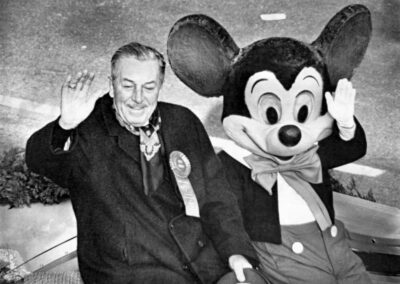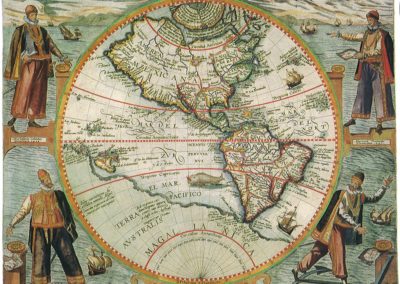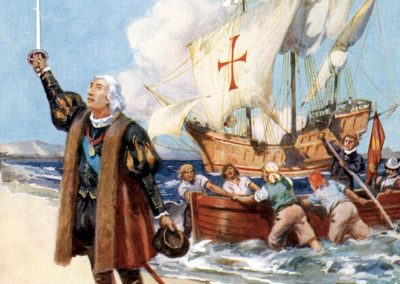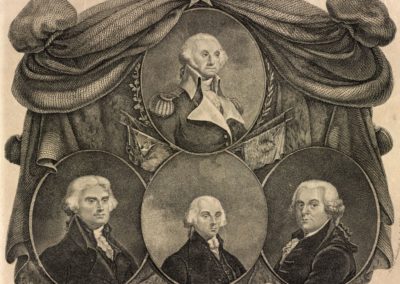Edgar Allan Poe – Inventor of Modern Detective Stories
Despite being discouraged by family members, Poe continued to work on his craft.
By: Kelli Ballard | April 23, 2025 | 664 Words
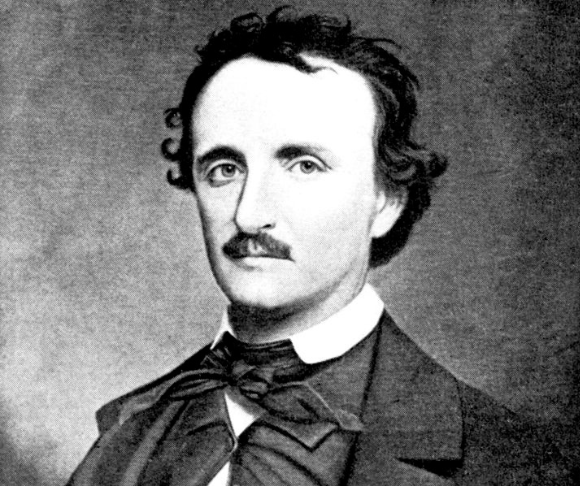
Edgar Allan Poe (Photo by: Pictures from History/Universal Images Group via Getty Images)
Edgar Allan Poe was born on January 19, 1809, in Boston, Massachusetts. An American short-story writer and poet, he is recognized as the inventor of modern detective stories. His stories and poems led the way for cartoons such as Scooby-Doo and The Great Mouse Detective, and famous characters such as Sherlock Holmes and Nancy Drew.
Edgar Allan Poe – Early Life
Poe’s parents were both actors, but his mother died in 1811, when he was only two years old. He went to live with John Allan, a man presumed to be his godfather, in Richmond, Virginia. By the age of 13, Poe was already a creative writer, but the headmaster of his school and his guardian both discouraged his talent. John wanted Poe to follow in the family business as a tobacco merchant. But Edgar was determined and continued writing, even putting poems on the back of John’s business papers.
Poe didn’t really know his biological parents and didn’t have the best of relationships with his foster dad. In fact, when John died, he didn’t include Edgar in his will. The young poet continued to write, publishing several books, despite struggling financially. His big break came when one of his short stories won a contest that earned him $50 and recognition. He became an editor with the Southern Literary Messenger in Richmond, VA, and earned the nickname the “Tomahawk Man” because he was so critical with his reviews.
Poems and Stories
 Poe continued to write stories and poems, but his harsh criticism as an editor and his combative personality with publishers and other publications strained relationships. He left the magazine in 1837 and continued to work on his craft, publishing works in different magazines and newspapers. In 1844, he moved to New York City and wrote a news story that was printed in The New York Sun. The story was about a balloon trip across the Atlantic Ocean that never happened. It gained a lot of attention, but his next work, “The Raven,” in 1845, is what made Poe so famous.
Poe continued to write stories and poems, but his harsh criticism as an editor and his combative personality with publishers and other publications strained relationships. He left the magazine in 1837 and continued to work on his craft, publishing works in different magazines and newspapers. In 1844, he moved to New York City and wrote a news story that was printed in The New York Sun. The story was about a balloon trip across the Atlantic Ocean that never happened. It gained a lot of attention, but his next work, “The Raven,” in 1845, is what made Poe so famous.
“The Raven” is considered one of the best-known poems in American literature and is Poe’s best work, according to critics. Biography describes the poem as, “An unknown narrator laments the demise of his great love Lenore and is visited by a raven, who insistently repeats one word: ‘Nevermore.’ In the work, which consists of 18 six-line stanzas, Poe explored some of his common themes: death and loss.”
Here are the last two stanzas in this poem:
“Be that word our sign of parting, bird or fiend!” I shrieked, upstarting—
“Get thee back into the tempest and the Night’s Plutonian shore!
Leave no black plume as a token of that lie thy soul hath spoken!
Leave my loneliness unbroken!—quit the bust above my door!
Take thy beak from out my heart, and take thy form from off my door!”
Quoth the Raven “Nevermore.”
And the Raven, never flitting, still is sitting, still is sitting
On the pallid bust of Pallas just above my chamber door;
And his eyes have all the seeming of a demon’s that is dreaming,
And the lamp-light o’er him streaming throws his shadow on the floor;
And my soul from out that shadow that lies floating on the floor
Shall be lifted—nevermore!
Edgar Allan Poe had a difficult life. He battled alcoholism and poverty and had poor relationships with his family. He married his cousin, who was only 13 at the time, and lost her in 1847 to tuberculosis when she was only 24. His works, however, will continue to live on for generations to come, and it is he we have to thank for introducing us to the modern detective stories and characters we love today.

- Edgar Allan Poe is a famous poet and storyteller whose works continue to influence and inspire today.
- Poe is considered the inventor of modern detective stories.
- Despite a difficult life, Poe continued to work on his dream.



